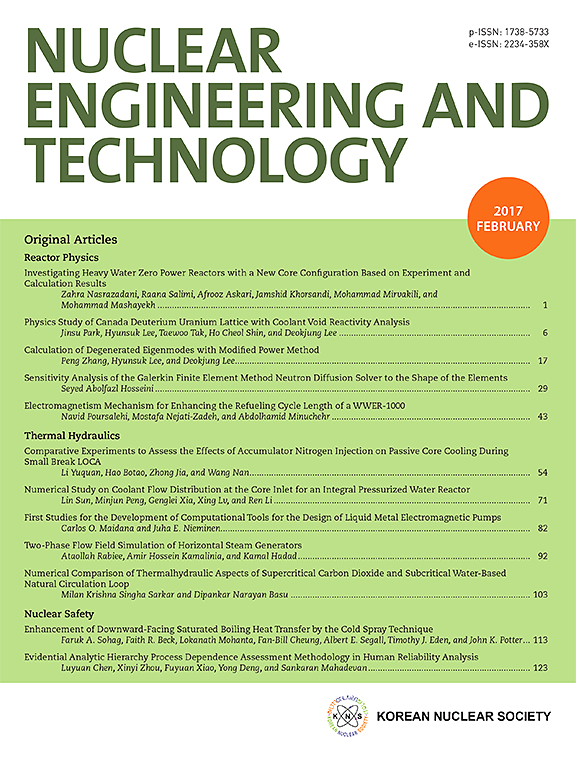评估植物样品中铅放射性同位素积累的可能性和有效剂量
IF 2.6
3区 工程技术
Q1 NUCLEAR SCIENCE & TECHNOLOGY
引用次数: 0
摘要
本研究采用HPGe能谱仪对蔬菜样品中的放射性铅浓度和辐照剂量进行了测定。结果表明,菠菜样品中铅同位素的放射性浓度呈显著正相关,相关系数为0.63 ~ 0.87。蔬菜样品中放射性铅的浓度在辐射科委会组织规定的限度之内。210Pb的年承诺有效剂量占铅放射性核素总剂量的99%以上,在辐射科委会的世界平均值范围内。聚类分层聚类(AHC)方法聚类蔬菜样品中铅放射性同位素的累积能力为3组。在研究人群中,素食者的年有效剂量最高。从日常饮食到血流的210Pb的胃肠道吸收约为2.4 mBq d−1。因此,胡志明市的蔬菜样本在铅放射性核素方面是安全的,可供人类食用。本文章由计算机程序翻译,如有差异,请以英文原文为准。
Assess the possibility of lead radioactive isotope accumulation in plant samples and the effective dose
In this study, the radioactive lead concentration in vegetable samples and the irradiation dose were estimated by the HPGe gamma spectrometer system. The results showed that, in spinach samples, the radioactive concentrations of lead isotopes were positively correlated with each other, with a correlation coefficient of 0.63–0.87. The concentration of radioactive lead in the vegetable samples was within the limits set by the UNSCEAR organization. The annual committed effective dose of 210Pb accounts for more than 99 % of the total dose of lead radionuclides and is within the world average values of UNSCEAR. Agglomerative Hierarchical Clustering (AHC) method to cluster the ability to accumulate lead radioactive isotopes in vegetable samples is 3 group. Vegetarians have the highest annual committed effective dose among the studied groups. The gastrointestinal absorption from the daily diet into the bloodstream of 210Pb is approximately 2.4 mBq d−1. Therefore, vegetable samples from Ho Chi Minh City are safe for human consumption in the aspect of lead radionuclides.
求助全文
通过发布文献求助,成功后即可免费获取论文全文。
去求助
来源期刊

Nuclear Engineering and Technology
工程技术-核科学技术
CiteScore
4.80
自引率
7.40%
发文量
431
审稿时长
3.5 months
期刊介绍:
Nuclear Engineering and Technology (NET), an international journal of the Korean Nuclear Society (KNS), publishes peer-reviewed papers on original research, ideas and developments in all areas of the field of nuclear science and technology. NET bimonthly publishes original articles, reviews, and technical notes. The journal is listed in the Science Citation Index Expanded (SCIE) of Thomson Reuters.
NET covers all fields for peaceful utilization of nuclear energy and radiation as follows:
1) Reactor Physics
2) Thermal Hydraulics
3) Nuclear Safety
4) Nuclear I&C
5) Nuclear Physics, Fusion, and Laser Technology
6) Nuclear Fuel Cycle and Radioactive Waste Management
7) Nuclear Fuel and Reactor Materials
8) Radiation Application
9) Radiation Protection
10) Nuclear Structural Analysis and Plant Management & Maintenance
11) Nuclear Policy, Economics, and Human Resource Development
 求助内容:
求助内容: 应助结果提醒方式:
应助结果提醒方式:


